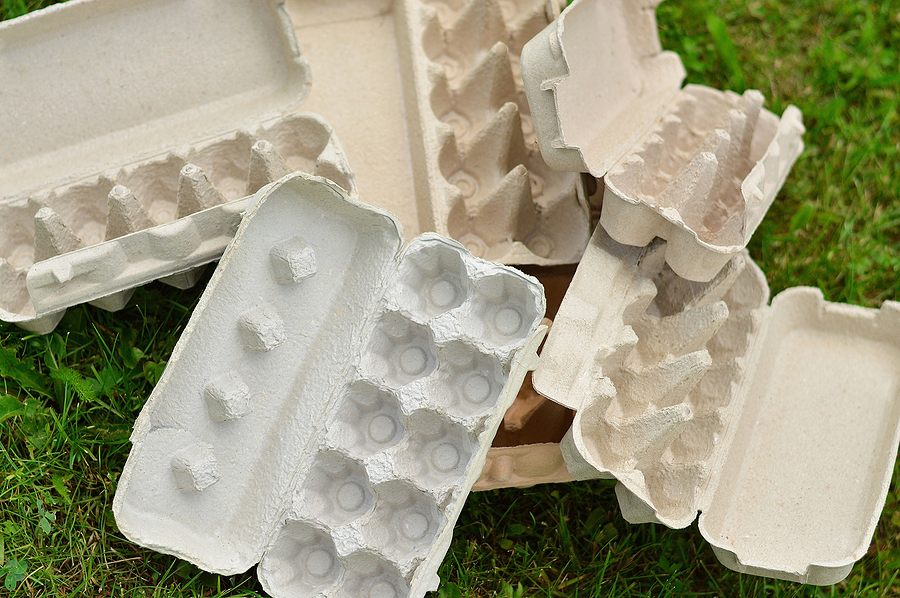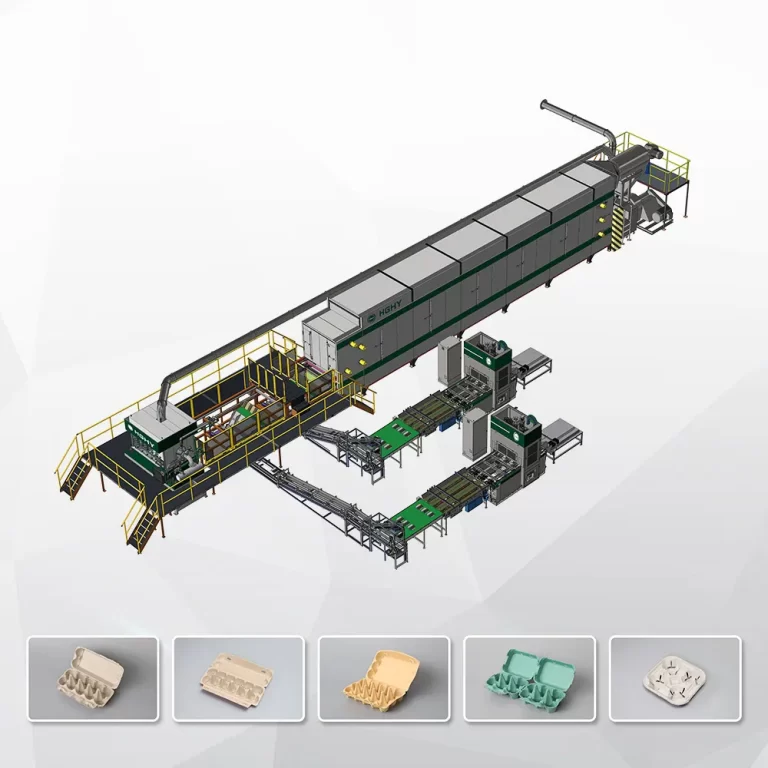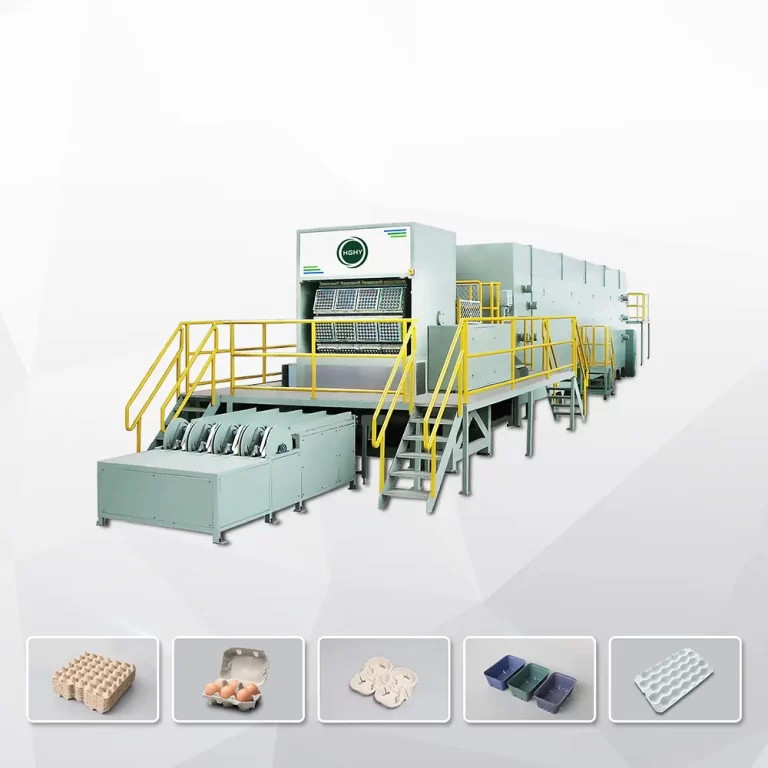In an era where environmental concerns and sustainability have become paramount, industries are shifting towards circular economy models to minimize waste and maximize resource efficiency. One such model is the integration of waste paper recycling with egg tray production, which offers a sustainable and cost-effective solution for packaging needs while significantly reducing environmental impact.

The Circular Economy Concept
A circular economy is designed to eliminate waste and ensure that materials are continuously repurposed. Instead of the traditional linear model—where products are manufactured, used, and discarded—the circular economy focuses on recycling and reusing materials to create a closed-loop system. In the case of egg tray production, waste paper is collected, processed, and transformed into molded pulp trays, which can be recycled again at the end of their lifecycle.
The Role of Waste Paper in Egg Tray Production
Waste paper serves as the primary raw material for producing molded pulp egg trays. The process follows several key steps:
- Collection & Sorting – Waste paper is gathered from various sources such as old newspapers, cardboard, office paper, and packaging waste.
- Pulping – The collected paper is mixed with water and broken down into a slurry, removing contaminants and non-fibrous materials.
- Molding – The slurry is shaped into egg trays using specialized molds and vacuum suction technology.
- Drying & Pressing – The molded trays are dried to remove excess moisture and enhance durability.
- Recycling & Reuse – At the end of their lifecycle, egg trays can be collected and recycled, completing the circular process.
Environmental and Economic Benefits
1. Reduction in Waste and Landfill Use
By recycling paper waste into egg trays, a significant amount of paper material is diverted from landfills, reducing environmental pollution and conserving landfill space.
2. Conservation of Natural Resources
Using recycled paper instead of virgin wood pulp reduces the need for deforestation, preserving forests and biodiversity.
3. Lower Carbon Footprint
The production of molded pulp egg trays consumes less energy compared to plastic or foam alternatives, leading to lower carbon emissions and a more sustainable manufacturing process.
4. Cost-Effectiveness
Recycling waste paper reduces raw material costs, making egg tray production an economically viable business model with sustainable profit margins.
Challenges and Solutions
Despite the advantages, integrating waste paper recycling with egg tray production presents some challenges:
- Contaminated Paper Waste: Proper sorting and cleaning processes are required to maintain pulp quality.
- Energy Consumption: Although lower than plastic production, energy-efficient drying technologies can further reduce costs.
- Supply Chain Management: Establishing a steady supply of waste paper requires collaboration with recycling centers and waste management firms.
Conclusion
Integrating waste paper recycling with egg tray production is a prime example of a circular economy in action. It not only reduces waste and conserves resources but also provides a sustainable, cost-effective alternative to plastic-based packaging. By adopting this model, businesses can contribute to environmental protection while benefiting from an economically viable production process. As industries and governments continue to push for sustainable solutions, molded pulp egg trays will play an increasingly significant role in reducing global waste and promoting circular economy principles.



